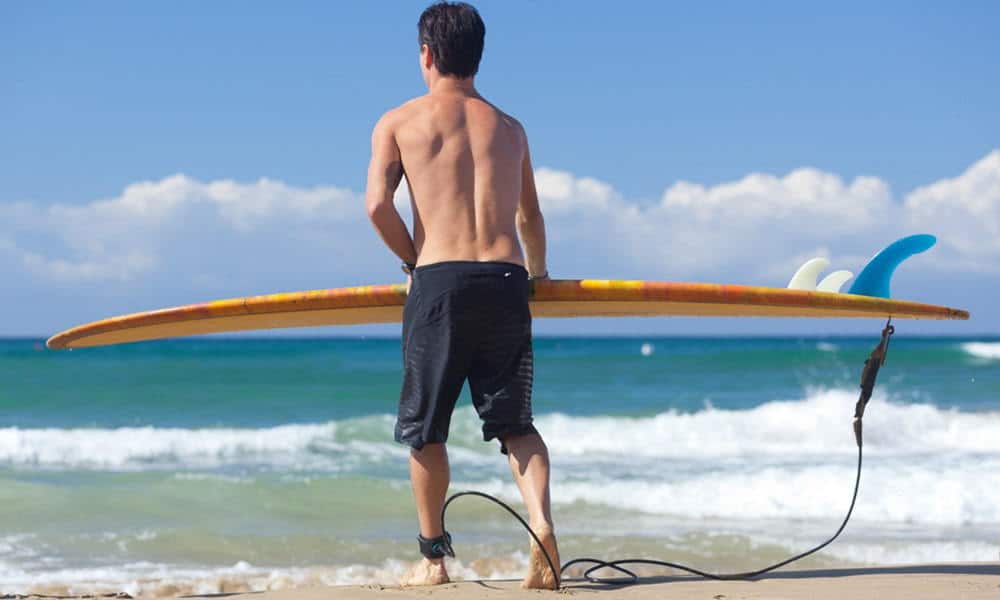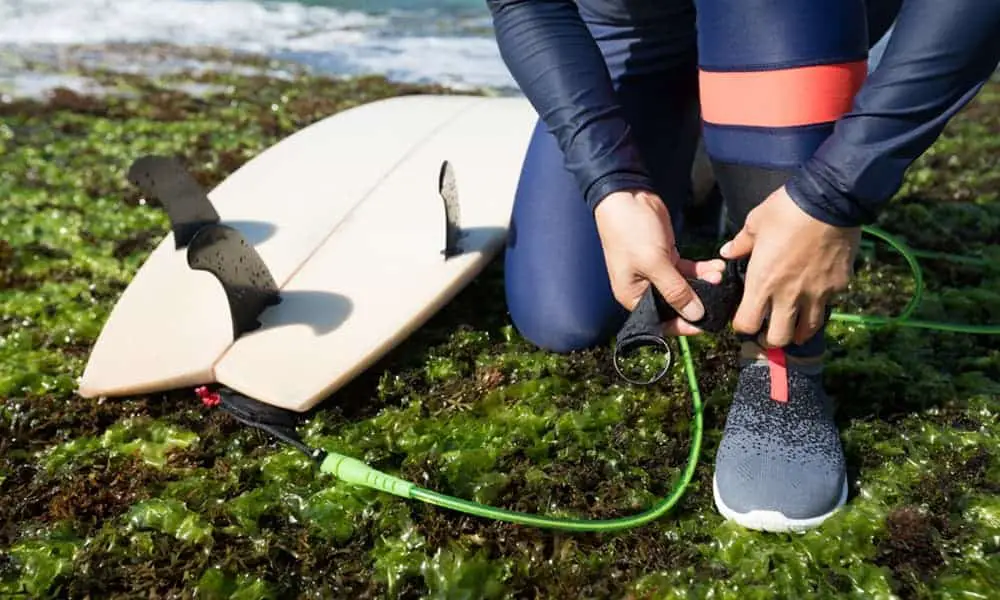A surf leash is an essential piece of equipment for a lot of surfers these days, but it Wasnt always that way. While its history can be a little vague, it’s generally thought that the surfboard leash we know today was invented in 1971 by Pat O’Neill, son of the inventor of the wetsuit, Jack.
The use (or lack of use) of surf leashes is wildly debated among certain surfing circles today, but there is no disputing the idea that the surf leash didn’t start catching on until Pat commercialized the idea in the early ’70s.
After its commercialization, the surf leash started to catch on, but it was far from perfect. The fact that the surfboard leash was constructed from super stretchy material often led to the board bouncing back toward the surfer after a wipeout, resulting in injuries that may not have occurred otherwise.
Eventually, though, technology improved, and surfers became more open to the idea of a surf leash. These days, the surf leash is considered a must-have piece of equipment.

Key Things to Know About Surf Leashes
Before we get into determining how long a surf leash should be, there are some things surfers should know about the surfboard leash itself.
- The Pros of a Surf Leash: Perhaps the biggest advantage to having a surf leash is the reason it was invented in the first place; to avoid losing your board after coming across a big wave and wiping out. Before the surf leash, losing control of your board often meant a long swim to retrieve it. While you should do what you can to always keep control over your board, even after a wipeout, a surf leash will keep it close, eliminating extensive swims to shore.
Keeping the board close also means that it is a lot less likely to get damaged by being pushed into rocky shorelines or jetties.
As touched on before, a surfer should always do what they can to maintain control of their board and not rely on a surf leash to do that for them. With that being said, asurfboard leash can help you safely kick out the board when faced with an imminent wipeout. While kicking your board out from under you may not be the best solution in most situations, there are those times when it might be necessary.
Finally, a surf leash is a perfect accessory for crowded beaches as it prevents any loss of control of your board from interfering with or even possibly injuring the surfers around you.

- The Cons of a Surf Leash:It’s important to understand that a surf leash is not meant as a life-saving device and should not be used as such. Just because a surfboard leash can keep your board close, and the board can be used as a floatation device, that doesn’t mean you should rely on it. Surfboard leashes can and will break, and if this happens when you’ve surfed your way to exhaustion, you could find yourself in some serious trouble without your board there to help you out. Always be sure you can swim back to shore without your board should the need arise.
While it’s not very common, there is always a possibility that your surf leash can get caught on things that are protruding from the bottom. This could lead to a bad situation, but it shouldn’t keep you from having a leash. Instead, find one that can be easily removed so that if the situation arises, you can easily and safely get out of it.
A bad habit that many surfers have is ditching their board, and that habit is even more profound when using a surf leash Just because you have a surfboard leash, it doesn’t mean you can be careless with your board. Having it attached doesn’t prevent it from interfering with other surfers or even injuring them.
Components of a Surf Leash
At its core, a surf leash is a rather simple piece of equipment.Each surfboard leash will consist of the same basic components.
- The Rail Saver: The Rail Saver is the part of the leash that attaches to the board and holds the leash itself, keeping it away from the board and preventing the cord from digging into the tail and damaging the board. Taking the brunt of the pressure when being pulled on, the Rail Saver is typically thick and soft to be strong yetforgiving.
- The Cord: The cord, or leash, is usually made of polyurethane and attaches to the Rail Saver on one end and the cuff on the other. While early surf leashes were made from very stretchy material, today’spolyurethane leash cords combine the right combination of stretchiness and strength so that it is not only strong, butit will also reduce the chance of your board snapping back at you and causing injury.
- The Cuff: The cuff could be one of the most important components to consider when choosing the right surf leash. Because it is the piece that attaches your ankle to the surfboard leash, the ankle cuff needs to not only be as comfortable as possible, but also easy to remove in case of an emergency.
- The Swivel: A surf leash will have two swivels on it, one on each end. Think of the swivel as a joint that attaches to the major components of the surfing leash and moves freely, allowing for your ankle to have a free range of motion. The swivels prevent the cord from getting twisted and tangled, and the right one will make it seem as if you don’t have a surfboard leash on at all.
How Long Should a Surf Leash Be?

When choosing the right surf leash, some things should be considered.The thickness of the cord and the experience of the surfer are important, but there is one thing that both new and experienced surfers ask most often:How long should a surf leash be?
While it may seem like something that would have many variables, like the surfer’s height and weight, it’s much simpler than that. A surf leash that is too long will often get in the way of you being able to catch the right wave, and a surf leash that is too short can keep the board too close, resulting in it shooting back and injuring you in a wipeout situation. So, how do you determine the right length?
It’s simple. A surf leash should be no shorter than the board itself. For example, if you’re riding a six-foot board, then a six-foot surfboard leash would be the absolute shortest. This rule applies to any length of board.
From there, the length can vary based on how comfortable you are with longer leashes, but a surfboard leash is typically no more than a few inches longer than the board. How much longer the leash is than the board is more of a personal preference. A beginner surfer will often opt for a longer leash that will prevent the board from snapping back too quickly. A more experienced surfer, on the other hand, might go for a leash that is closer to the size of their board to prevent any interference when trying to catch a wave. More experienced surfers tend to be able to control their boards better and, therefore, aren’t as concerned with the leash causing the board to snap back at them.
